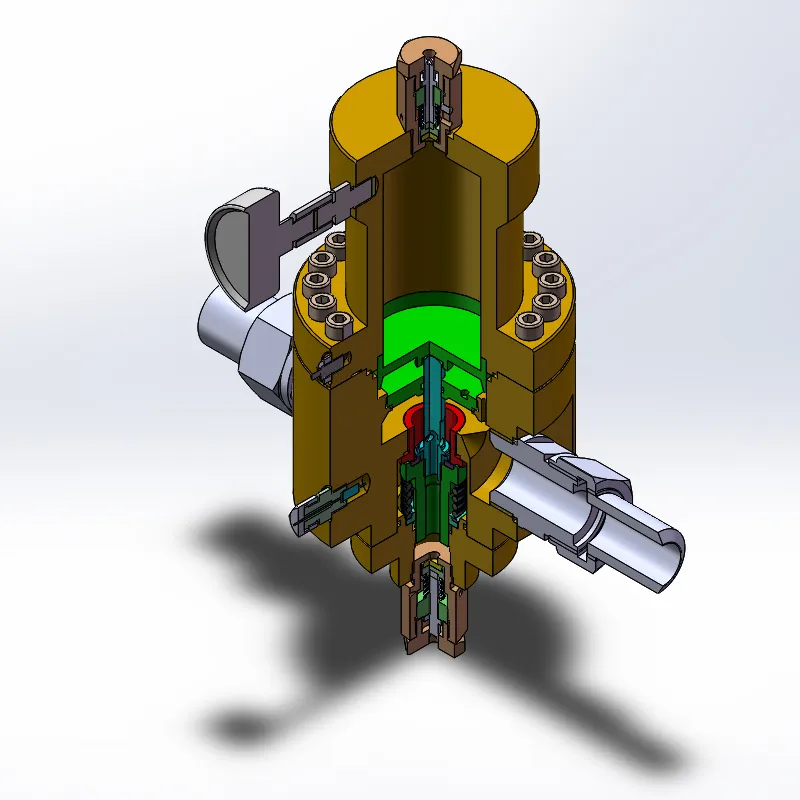
Dec . 11, 2024 09:29
Back to list
Pressure Reduction Skid Design and Optimization for Efficient Fluid Management Systems
Understanding Pressure Reduction Skids A Comprehensive Overview
In the process and energy industries, managing pressure is a critical aspect of operational efficiency and safety. One of the essential components in pressure management systems is the pressure reduction skid. This equipment plays a pivotal role in various applications, from oil and gas handling to chemical processes. In this article, we will explore the purpose, design, and operational principles behind pressure reduction skids, along with their advantages in industrial applications.
What is a Pressure Reduction Skid?
A pressure reduction skid is a pre-fabricated unit designed to reduce and control the pressure of gases or liquids in a piping system. These skids typically consist of several components, including pressure regulators, control valves, flow meters, and safety devices, all mounted on a structural frame. The modular design allows for quick installation and easy relocation, making skids a preferred choice for many industries.
Purpose and Functionality
The primary purpose of a pressure reduction skid is to ensure that pressures within a system are maintained at safe and optimal levels. This is particularly important in scenarios where high-pressure gas or liquid must be reduced to a level suitable for downstream processes, such as in metering, combustion, or transportation.
For instance, in the oil and gas industry, natural gas may be extracted from the ground at very high pressures. These pressures must be reduced before the gas can enter processing facilities or be transported through pipelines. Here, a pressure reduction skid helps manage this transition smoothly and safely, preventing over-pressurization that could lead to equipment failure or dangerous leaks.
Design Components
A typical pressure reduction skid is composed of several critical components
1. Pressure Regulators These devices automatically adjust the pressure of the fluid to maintain it within specified limits, regardless of upstream variations. They are crucial in ensuring that process equipment is not subjected to harmful pressure levels. 2. Control Valves These valves are used to regulate flow by varying the size of the flow passage. By controlling the downstream pressure, they help maintain an optimal operational environment.
3. Flow Meters Accurate flow measurement is essential for process monitoring and control. Flow meters provide critical data that operators use to optimize the process and enhance efficiency.
pressure reduction skid

4. Safety Devices Safety relief valves and pressure switches are incorporated to provide an additional layer of safety. These devices activate if pressure exceeds preset limits, diverting excess flow or venting to prevent over-pressurization.
5. Skid Structure The structural frame of the skid is designed to support all components and facilitate transportation and installation. It can be mounted on wheels for portability or designed for permanent installation in a fixed location.
Advantages of Pressure Reduction Skids
1. Modularity and Scalability Skids can be easily modified or expanded to accommodate new demands in industrial processes. This modular approach allows for scalable solutions tailored to specific operational needs.
2. Reduced Installation Time Since pressure reduction skids are pre-engineered and assembled off-site, their installation on-site is significantly quicker than traditional piping systems. This translates to reduced downtime and costs during project execution.
3. Enhanced Safety The integrated safety devices ensure that systems remain within operational limits, mitigating the risks associated with high-pressure operations. This not only protects equipment but also the personnel working within the facility.
4. Cost-Effectiveness By optimizing space and minimizing the need for additional piping, skids can lead to considerable cost savings. Their efficiency also contributes to lower operational costs over the system's lifecycle.
5. Higher Reliability Pre-fabrication in a controlled environment results in higher quality assurance, leading to improved reliability and performance of the system once it is operational.
Conclusion
Pressure reduction skids are essential components in ensuring the safe and efficient handling of high-pressure fluids in various industries. Their modular nature, coupled with the ability to enhance safety and reliability, make them an attractive choice for companies aiming to optimize their processes. As industries continue to evolve and face new challenges in pressure management, the importance of pressure reduction skids will only grow, solidifying their role as a cornerstone of modern engineering solutions.
Latest news
-
Safety Valve Spring-Loaded Design Overpressure ProtectionNewsJul.25,2025
-
Precision Voltage Regulator AC5 Accuracy Grade PerformanceNewsJul.25,2025
-
Natural Gas Pressure Regulating Skid Industrial Pipeline ApplicationsNewsJul.25,2025
-
Natural Gas Filter Stainless Steel Mesh Element DesignNewsJul.25,2025
-
Gas Pressure Regulator Valve Direct-Acting Spring-Loaded DesignNewsJul.25,2025
-
Decompression Equipment Multi-Stage Heat Exchange System DesignNewsJul.25,2025

